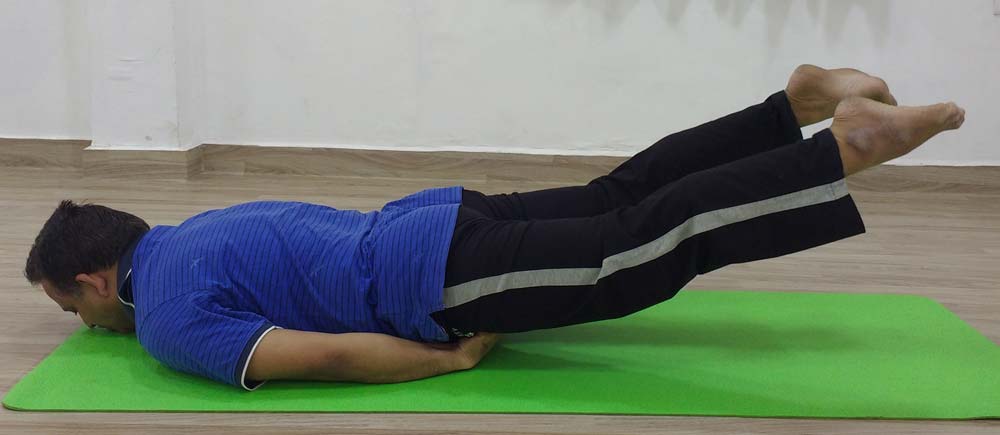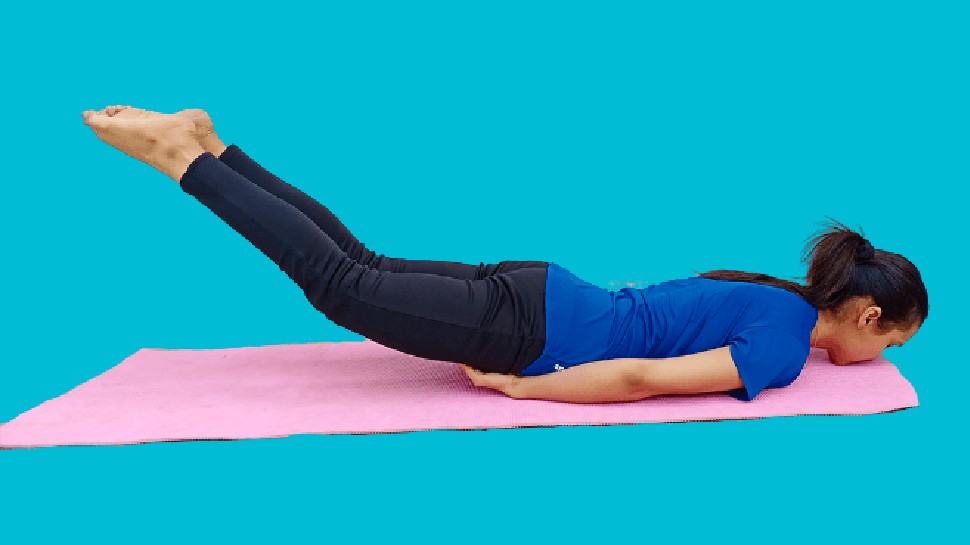Table of Contents
Salabhasana – Full Locust Pose
Full Locust Pose or Salabhasana is a simple backbend that strengthens the entire back from the nape of the neck to the backs of the heels.
Salabhasana Meaning
Salabh means ‘locust’ in Sanskrit. In the final position of Salabhasana, the practitioner’s appearance gives the looks of a locust with its tail raised. Because of these reasons, the Salabhasana is also known by the name ‘the locust pose‘ or ‘the grasshopper pose‘. Locusts are known for their power, energy, and ability to take great leaps. So are the benefits of Asana. This yoga pose is very good for lower back pain, sciatic nerve pain, and even knee pain. This asana helps exercise the spine. This pose also helps improve balance and strength.
Salabhasana Steps
- Spread a Yoga mat or blanket on the floor and lie flat on your stomach.
- Keep the hands alongside the body with palms facing upwards or with the hands clenched.
- Rest the chin on the floor.
- Close your eyes and relax your body.
- While inhaling, raise the legs as high as possible without straining.
- The knees should be kept straight. The sacrum too should be raised a little along with the legs.
- Now hands and chest will feel the burden of the legs.
- Keep the thighs, legs, and toes in a straight line.
- Remain in the final pose for as long as is comfortable and then slowly bring down the leg while breathing out.
- After returning to the starting position, relax the body with the head turned to one side.
- Repeat the process two to three times.
Salabhasana Contraindications
- Salabhasana should not be practiced by people with a weak heart, coronary thrombosis, or high blood pressure.
- It should not be practiced by people suffering from a hernia and intestinal tuberculosis.
Salabhasana Benefits
- The intra-abdominal pressure is increased to a very high degree by the regular practice of Salabhasana.
- The asana strengthens the lower back and pelvic organs and relieves lower back pain, sciatic nerve pain, and a slipped disc.
- Salabhasana relieves constipation and tones up the liver, pancreas, and kidneys. All the abdominal muscles are strengthened to a very high degree.
- The vertebra of the lumbar and the sacrum bone also get toned up.
- The sacral, coccygeal, and lower parts of the lumbar regions receive plenty of blood and become healthy and strong.
- Salabhasana tightens the muscles of the buttocks and to an extent, helps relieve hip pain.
Salabhasana Sequence
In general practice or in Yoga classes, a series of Bhujangasana, Salabhasana, and Dhanurasana is practiced in order in a set. Bhujangasana exercises the upper part of the body and Salabhasna the lower extremity of the body. Dhanurasana stretches the whole body.
Also, see – How To Do Ardha Salabhasana Yoga Pose


)